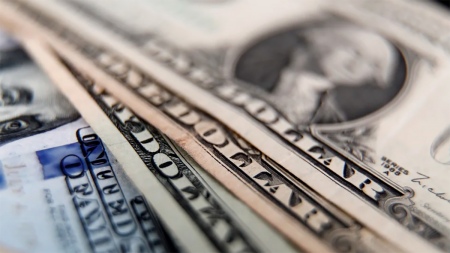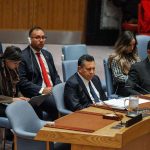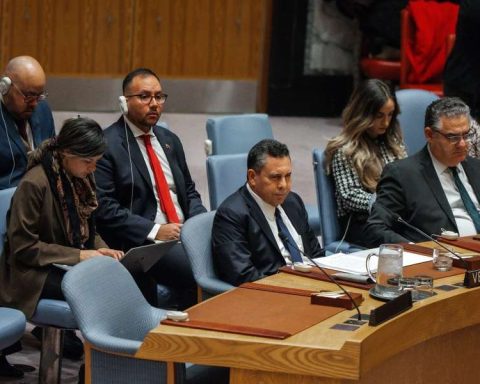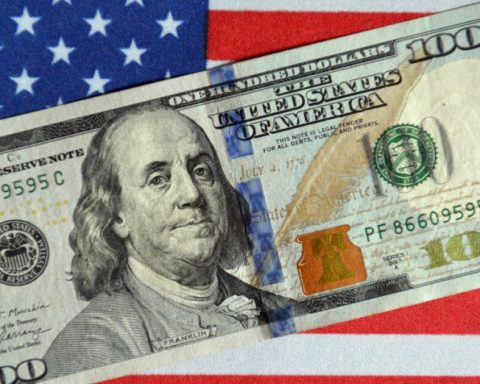Better interest rates for Mutual Investment Funds and Treasury tenders, repurchases of sovereign debt in dollars and a slower rate of devaluation of the peso, are the measures with which the Central Bank (BCRA) and the Ministry of Economy have advanced in recent days to reinforce interest in assets in pesos and, thus, take pressure off the exchange rate gap.
measurements include a commitment by the Central Bank to maintain its monetary policy rate (75% TNA and 107.35% TEA) at positive real levels, that is, not lowering the return paid by term deposits or the cost of borrowing, at least until inflation shows signs of a sustained slowdown in the next INDEC surveys.
“The positive interest rate, the exchange rate or the pass-through behind the interest rate and inflation behind the pass-through and the interest rate,” he said days ago Economy Minister Sergio Massasuch as the correct order of incentives in the coming months to find a stabilization path.
The objective of the economic team is that the main variables -dollar, inflation and interest rate- line up in shape that inflation lags behind the return on assets in pesos and that it slow down in the coming months so that, as of April, the CPI data “starts with 3”, as Massa also said.
For this, it is key to keep the financial dollars -MEP and CCL- smooth, which, historically, have been the thermometer of moments of economic instability and which, despite rising close to 7.5% in January, accumulate a fall in real terms of more than 20% from July 2022, according to data from the consulting firm Analítyca.
In that sense, this Friday the MEP dollar closed at $352.78 and the CCL at $370.39, 10% higher in nominal terms than the peak reached in July of last yearafter the resignation of the then Minister of Economy Martín Guzmán.
Sustaining this moderate calm in dollar prices depends, among other factors, on sustaining the appetite for Argentine debt securities and on keeping the pesos circulating in the economy in financial assets in pesos.
Hence, the Treasury has come out on Friday to improve -although in the margin- the maximum rate paid in the previous tender, in which it obtained financing for $223,000 million, more than double the maturing titles, which guaranteed it a rollover of 144% of January maturities.
As for the debt in dollars, last week Massa reported that the Government would go out to buy back sovereign debt for more than US$ 1,000 million with resources in excess of the fiscal goal agreed with the IMF, an announcement that helped to deepen the fall of more than of 1,000 points of the Country Risk from September of last year onwards, when the dollar value of Argentine bonds rises.
For its part, the BCRA ended the week by partially reversing -after a complaint from the banking sector- its decision to raise the coefficient of the Passive Repos rate (72% TNA) to one day received by Mutual fundsby leaving it at 85%, after having taken it at the beginning of the week from 75 to 95%.
Even so, the FCI will be able to take Passes at a TNA of 61.2% (TEA of 84.32%), lower than the 68.4% (TEA of 98.05%) that it had, but better than the current until last Friday of 54% (TEA of 71.53%).
The measure seeks to improve the profitability of shorter-term securities, which are the most sought after by the FCI Money Market, which offer lower yields but less volatility and the possibility of accessing the money invested in less than 24 hours.
These types of funds are today the main refuge channel for pesos invested in FCIsince they concentrate more than 53% of the almost $7 trillion that companies, insurers and private individuals of different kinds have invested in Funds in pesos, according to data from the Argentine Chamber of Investment Funds.
“It is probable that the combination between both measures (those of the Treasury and the BCRA) will help to remove some volatility by moderating the pressures, especially considering that the implicit exchange rate in financial assets is already closer to levels that reflect the strong monetary expansion that we had in the second half of last year,” Adrián Yarde Buller, director of Facimex Valores, told Télam.
By last, The Central has been moderating the “crawling peg” rate, that is, the rate of daily devaluation of the peso against the dollar until taking it to a few tenths above 5% per month, so that it does not lag behind inflation, but it is not a factor that drives it either, according to a survey by the consulting firm F2 Financial Solutions.
For Yarde Buller, it is a strategy that “allows the real exchange rate to gradually improve”, although its sustainability over time “will depend mainly on the ability of the BCRA to accumulate reserves to meet the quarterly goals , especially considering the drought.”
“We will have to be attentive to what may happen as we get closer to the elections, as expectations may start to play a much larger role and this could require higher real interest rates. But I think that it is not yet time for that”, completed the specialist.


















